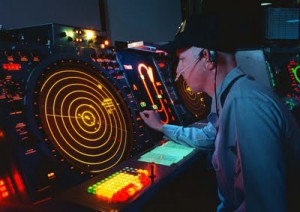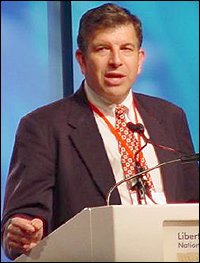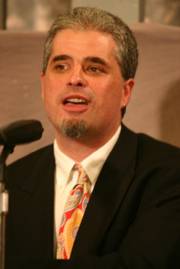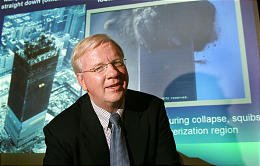By Jon Gold
8/26/2006
Updated: 9/2/2007
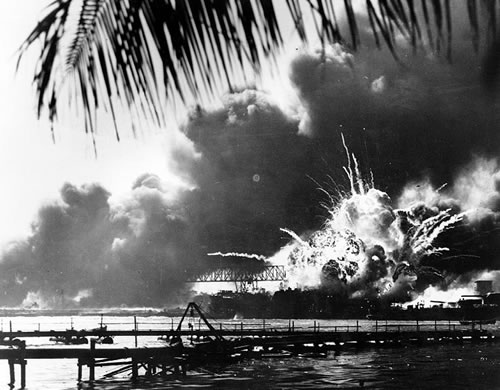 I was taking a look at “Rebuilding America’s Defenses” today, and I noticed the phrase, “Process Of Transformation” is mentioned SEVERAL times.
I was taking a look at “Rebuilding America’s Defenses” today, and I noticed the phrase, “Process Of Transformation” is mentioned SEVERAL times.
Page 12
In addition, the process of transformation must proceed from an appreciation of American strategy and political goals.
Page 13
Moreover, the process of transformation should proceed in a spirit of competition among the services and between service and joint approaches.
and…
While it is certain that new technologies will allow for the closer combination of traditional service capabilities, it is too early in the process of transformation to choke off what should be the healthy and competitive face of “interservice rivalry.”
and…
Finally, it must be remembered that the process of transformation is indeed a process: even the most vivid view of the armed forces of the future must be grounded in an understanding of today’s forces.
and…
In general terms, it seems likely that the process of transformation will take several decades and that U.S. forces will continue to operate many, if not most, of today’s weapons system for a decade or more.
and…
Thus, it can be foreseen that the process of transformation will in fact be a two-stage process; first of transition, then of more thoroughgoing transformation.
Pages 26 & 27
Moreover, the creation of middle-weight, independent units will begin the process of transforming the Army for future contingency needs.
Page 28
Most profoundly, such new units and concepts would give the process of transformation a purpose within the Army; soldiers would be a part of the process and take its lesson to heart, breaking down bureaucratic resistance to change.
Page 29
The process of transformation would be reinvigorated.
Page 37
A gradual increase in Air Force spending back to a $110 billion to $115 billion level is required to increase service personnel strength; build new units, especially the composite wings required to perform the “air constabulary missions” such as no-fly zones; add the support capabilities necessary to complement the fleet of tactical aircraft; reinvest in space capabilities and begin the process of transformation.
Page 38
Finally, the Air Force should use some of its increased budget and the savings from the cancellation of the Joint Strike Fighter program to accelerate the process of transformation within the service, to include developing new space capabilities.
Page 51
Further, the process of transformation, even if it brings revolutionary change, is likely to be a long one, absent some catastrophic and catalyzing event – like a new Pearl Harbor.
and…
The expense associated with some programs can make them roadblocks to the larger process of transformation – the Joint Strike Fighter program, at a total approximately $200 billion, seems an unwise investment.
and…
Any successful process of transformation must be linked to the services, which are the institutions within t he Defense Department with the ability and the responsibility for linking budget and resources to specific missions.
Page 58
Much has been written in recent years about the need to transform the conventional armed forces of the United States to take advantage of the “revolution in military affairs,” the process of transformation within the Defense Department has yet to bear serious fruit.
and…
Until the process of transformation is treated as an enduring mission – the worthy of a constant allocation of dollars and forces – it will remain stillborn.
Page 59
Third, and perhaps the most telling, the process of transformation has yet to be linked to the strategic tasks necessary to maintain American military dominance.
Page 60
Although it may take several decades for the process of transformation to unfold, in time, the art of warfare on air, land, and sea will be vastly different than it is today, and “combat likely will take place in new dimensions: in space, “cyber-space,” and perhaps the world of microbes.
and…
This is merely a glimpse of the possibilities inherent in the process of transformation, not a precise prediction.
and…
Indeed, these capabilities are sufficient to begin an “interim,” short-medium-term process of transformation right away, creating new force designs and operational concepts – designs and concepts different than those contemplated by the current defense program – to maximize the capabilities that already exist.
and…
Until the process of transformation is treated as an enduring military mission – worthy of a constant allocation of dollars and forces – it will remain stillborn.
Pages 60 & 61
This is especially debilitating to the process of transformation, which has become infected with a “lowest common denominator” approach.
Page 61
“Jointless” remains an important dimension of U.S. military power and it will be necessary to consider the joint role of the weapons, concepts of operations and organizations created through the process of transformation.
and…
Yet, the process of transformation will be better served by fostering a spirit of service competition and experimentation.
Page 62
As argued above, the two-stage process of transforming the U.S. armed forces is sufficiently important to consider it a separate mission for the military services and for the Joint Chiefs of Staff.
and…
Yet this initial process of transformation must be just the first step toward a more radical reconfiguring of the Army.
Page 63
While initiating the process of transformation in the near term, and while fielding new kinds of units to meet current missions, the Army must simultaneously invest and experiment vigorously to create the systems, soldiers, units and concepts to maintain American preeminence in land combat for the longer-term future.
27 times is the “Process Of Transformation” mentioned. Do you think it’s something they cared about?
Do you think America’s Defenses have undergone a “Process Of Transformation” since 9/11 happened? Considering America’s military is now taking part in two wars, and are on the verge of a third, I think it’s safe to say that they have.
Isn’t it interesting that a lot of the individuals affiliated with the PNAC, like Dick Cheney for instance, are associated with those corporations that would benefit the most from a “Process of Transformation” in America’s Military?
Don’t you think we, as citizens of these United States, should REALLY take a look at 9/11? Especially when you consider that the very people that called for this “process of transformation” are still in office today, and have lied to us about everything else?
I think we should. Before it happens again, and the “Process Of Transformation” becomes the “Death Of America.”

